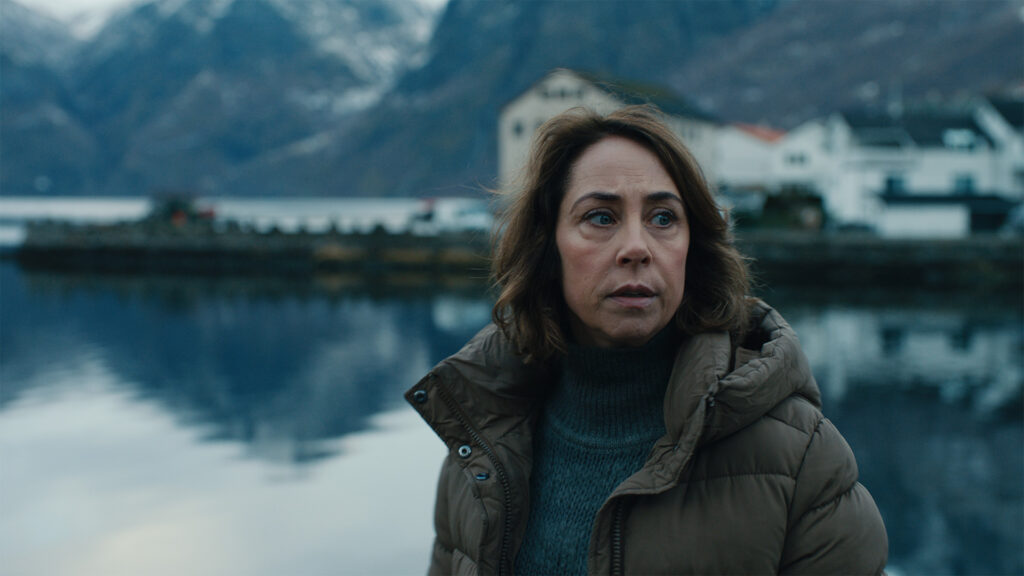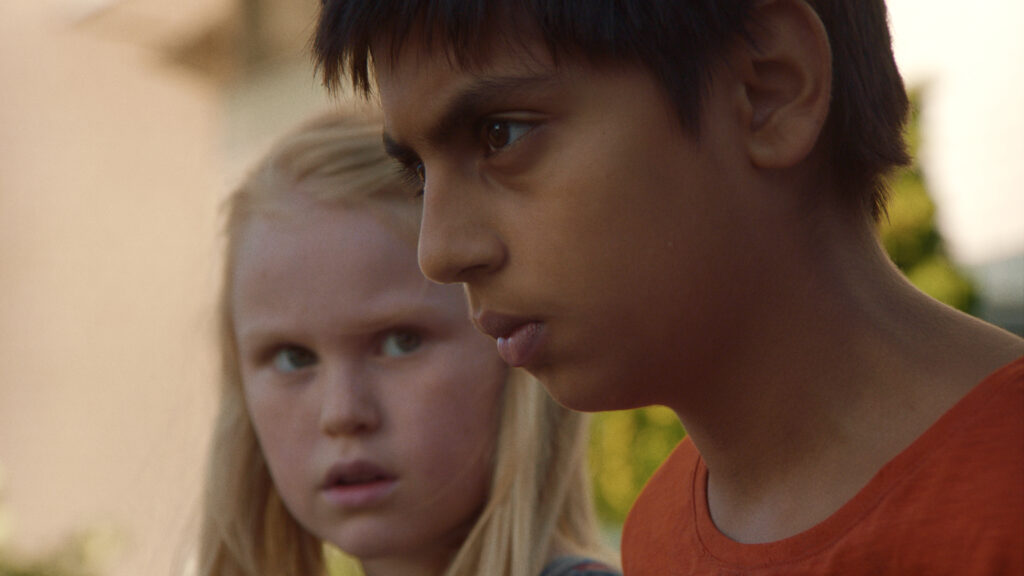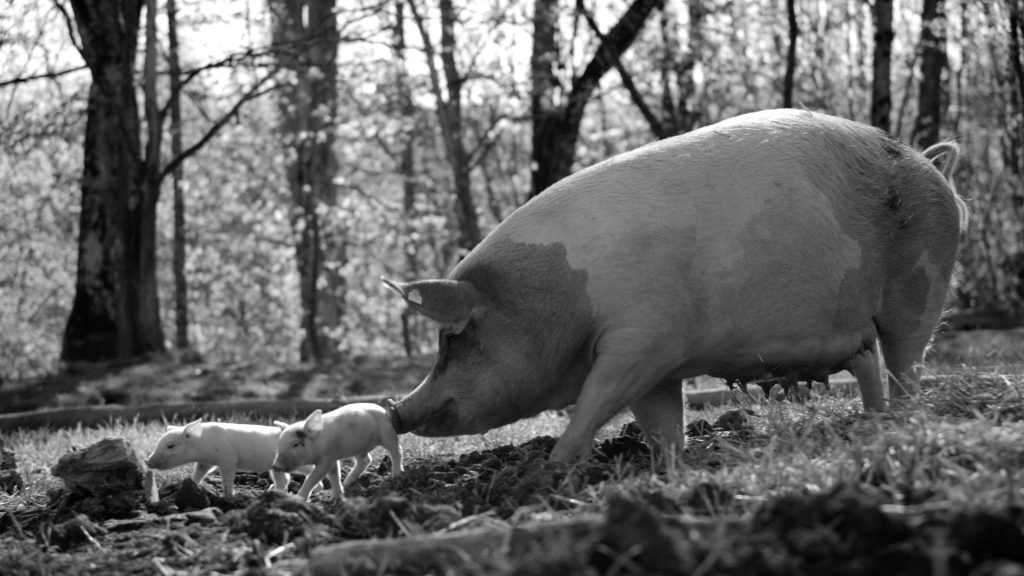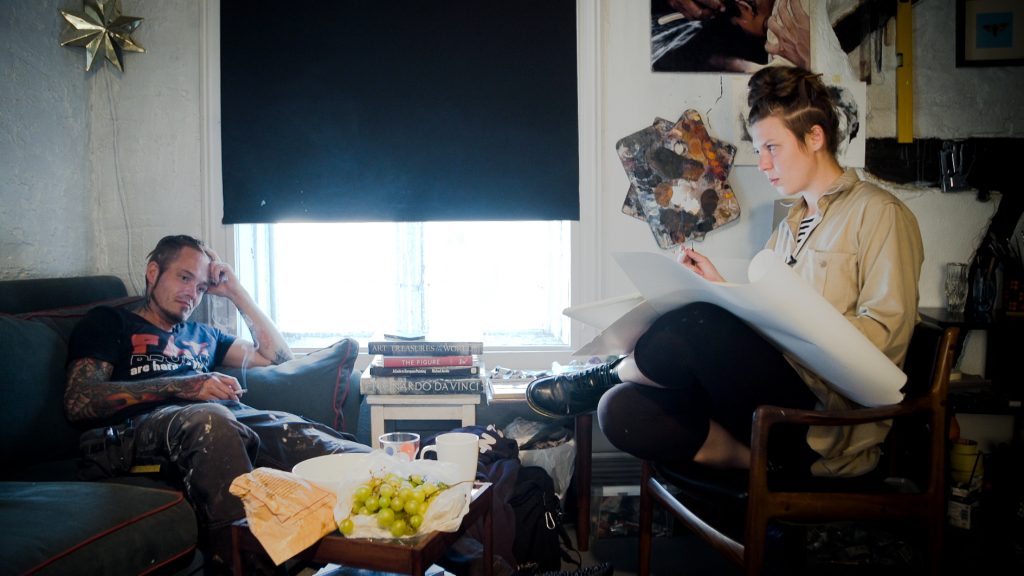April 8, 2023
by Carla Hay
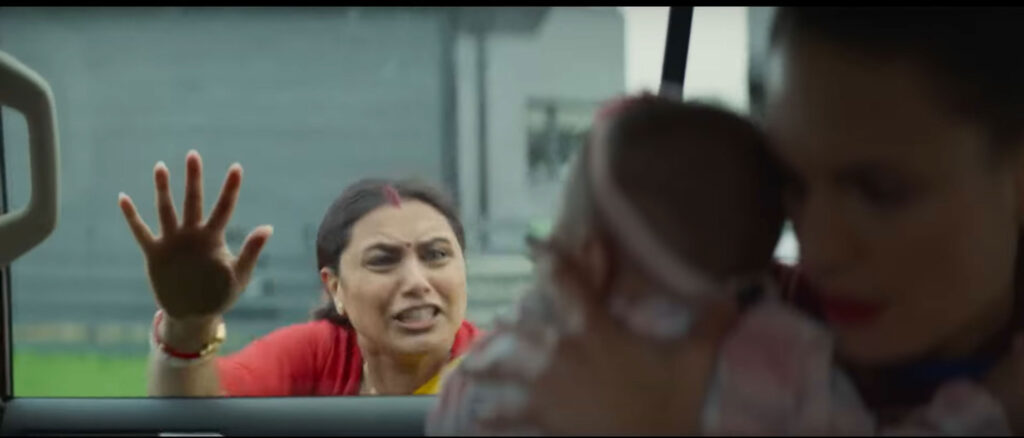
Directed by Ashima Chibber
Hindi, Norwegian and English with subtitles
Culture Representation: Taking place in Norway and India, the dramatic film “Mrs. Chatterjee vs. Norway” (based on a true story) features an Indian and white cast of characters representing the working-class, middle-class and wealthy.
Culture Clash: A married mother, who is an Indian immigrant living in Norway, loses custody of her two children to the Norwegian government over cultural conflicts, and she fights to get her children back.
Culture Audience: “Mrs. Chatterjee vs. Norway” will appeal primarily to people who are interested in watching badly edited and melodramatic movies about child custody battles.

“Mrs. Chatterjee vs. Norway” ruins a lot of audience good will meant for the title character by making her look entitled to some of her awful actions. Assaulting a law enforcement officer and kidnapping don’t mean that you should win a child custody battle. And what’s even worse is that “Mrs. Chatterjee vs. Norway” is based on a real-life custody battle that makes the real mother involved look a lot worse than she probably is, just for the sake of having melodrama in the film. Unfortunately, all of the performances in the movie match the bombastic screenplay and direction.
Directed by Ashima Chibber, “Mrs. Chatterjee vs. Norway” is based on the real story of Sagarika Chakraborty, an Indian immigrant mother who waged a two-year custody battle (from 2011 to 2013) against the government of Norway to regain custody of her son and daughter, who were both under the age of 7 during this ordeal. In the movie, the real people’s names have been changed. Chibber, Sameer Satija and Rahul Handa co-wrote the “Mrs. Chatterjee vs. Norway” screenplay and made this mother look like every worst stereotype of a shrieking, irrational ditz who does so many things she’s been told not to do that end up hurting her case and delaying the legal proceedings even more.
“Mrs. Chatterjee vs. Norway” also has horrendously choppy editing that jumps back and forth in the timeline, creating an unnecessarily jumbled narrative. The movie begins with a scene where Debika Chatterjee (played by Rani Mukerji) is seen frantically running out of her house in Stavanger, Norway, and chasing after the three Norwegian social workers who have taken away her two children: 5-month-old daughter Shuchi (played by Irha Ali) and 4-year-old son Shubha (played by Yuvaan Vanvari). Predictably, to add to the drama and to make Debika look more pitiful, she falls down in the street as the social workers and the children speed away in a car.
The movie circles back to that scene of the child snatching and car chasing much later in the story. “Mrs. Chatterjee vs. Norway” then shows how and why Debika and her husband Aniruddha Chatterjee (played by Anirban Bhattacharya) lost custody of their kids. Debika and Aniruddha are both natives of India, but their children were born in Norway. Aniruddha works for an oil rigging company, where he does a lot of manual work outside. Debika is a homemaker. Subha happens to be living with autism.
As “Mrs. Chatterjee vs. Norway” makes abundantly clear, because it’s repeated so many times in the movie, Aniruddha’s top priority in life is to get Norwegian citizenship. Therefore, he doesn’t want to do anything that would put his citizenship application in jeopardy. And so, this husband and wife have very different opinions on how they should deal with the Norwegian government after their two children are taken away by the government. You know where this is all going, of course.
Life seemed to be going so well for the Chatterjee family, who were living in a comfortable, middle-class home. This family seemed to be very stable and loving. But then, as shown in the movie, Debika became the subject of gossip among some mean-spirited mothers at Subha’s pre-school. They noticed that Debika would sometimes feed her kids with her bare hands, instead of using utensils. It’s an Indian custom for kids to be fed with bare hands, but someone reported Debika to child welfare authorities as an unfit parent.
And so, an investigation was opened at Velfred, Norway’s national child welfare service. Two Velfred officers named Sia Larsen (played by Kärt Tammjärv) and Matilda Magnusson (played by Britta Soll), who are both psychologists, had to visit the Chatterjee home every week for one month to interview Debika and Aniruddha, as well as observe these parents with their children. Aniruddha is irritated because he has to take time off from work for these child-welfare visits.
During these visits, Sia and Matilda notice that Debika is very involved in the childcare, but Aniruddha seems emotionally detached from these responsibilities. Debika explains that they have a traditional marriage where she is expected to do all the housework and other childcare, while Aniruddha is the household income earner. Sia and Matilda asks Aniruddha if he ever offers to help Debika with her domestic responsibilities, and he says somewhat defensively, “I earn. She takes care of the house.”
Sia and Matilda explain that this patriarchal attitude isn’t very acceptable in Norway, which has a culture that promotes gender equality in as many aspects of society as possible. Aniruddha and Debika are polite but firm in saying that the arrangement that they have works best for them and it isn’t hurting anyone. However, Sia and Matilda give each other looks that indicate this isn’t an acceptable answer.
As for the matter of feeding the children with bare hands, Debika assures these social workers that her hands are always clean when she feeds the kids. However, she acknowledges that people in Norway might not understand this Indian custom. Debika says she’ll feed her kids with utensils in public, so she won’t offend any Norwegians. There is underlying racism in the social workers’ judgments of the Chatterjee family, but no one says it out loud because Debika and Aniruddha want these child welfare officers to give them a good evaluation and then just leave the family alone.
However, during one of these visits, interview questions uncover that the marriage of Aniruddha and Debika isn’t as happy as they want people to think it is. Debika reluctantly admits Aniruddha has a temper and he can get a little rough with her. This statement is more cause for concern.
It doesn’t take long before Sia and Matilda tell Aniruddha and Debika that a Barnevernet senior officer named Aliis Ramsfjord (played by Tiina Tauraite), who is another psychologist, will be coming from Oslo to join Sia and Matilda on the next visit to the Chatterjee home. And that’s the day that Aliis, Sia and Matilda take Shubha and Shuchi away, with no advance warning. Velfred quickly puts Shubha and Shuchi in foster care.
The rest of “Mrs. Chatterjee vs. Norway” is a series of scenes showing Debika having various meltdowns while she tries to get back custody of the children. Lawyers get involved, of course. And so do the families of Debika and Aniruddha. And so does India’s external affairs minister Vasudha Kamat (played by Neena Gupta), who has a press conference interrupted by Debika pleading for Vashudha to help Debika.
At first, Debika and Aniruddha get a court-appointed lawyer named Sunil Kapoor (played by Namit), who doesn’t last long on the case. It doesn’t help that Debika is the type of client who will speak out of turn in court and have outbursts in front of the judge, thereby making things harder for her. There are small victories, such as Debika and Aniruddha getting limited visitation rights, but the spouses will have disagreements over how they should handle the case.
The lead attorney representing Velfred/the Norweigian government is Daniel Singh Ciupek (played by Jim Sarbh), who is somewhat arrogant and likes to win at all costs. The case goes through twists, turns and other complications, usually caused by Debika. She gets into legal trouble regarding the case, including getting caught kidnapping Shubha and Shuchi.
Debika also gets into physical altercations with people (including assualting law enforcement officials) and sometimes has to be restrained during her temper tantrums. What’s so atrocious is that the movie makes this violence look acceptable because it’s “a mother fighting for her children.” But the violent ways that Debika lashes out are all so counterproductive because Debika just makes herself look like an unstable mother.
In other words, Debika’s “loose cannon” temper and her willingness to commit serious crimes to get her kids end up really hurting her case (and her children) in the long run. It’s hard to feel complete sympathy for someone who has such a nasty and violent temper. Debika also has an obnoxious attitude that she shouldn’t be stereotyped as hysterical and unstable when she in fact does act hysterical and unstable. She’s not a horrible person, but is someone who is lacking in self-awareness about how she can be her own worst enemy in her case.
To be clear: This criticism of Debika is only about the character in the movie, not the real-life person who went through this terrible ordeal. And there’s no doubt that the mother in this movie (and in real life) was mistreated by a system that is portrayed as taking kids away from parents out of greed for money that the government gets for adopting out these children. If any good can come out of “Mrs. Chatterjee vs. Norway,” it’s in exposing the vulnerabilities that immigrant, non-citizen people have with governments that take advantage of non-citizens.
However, “Mrs. Chatterjee vs. Norway” comes across as less-than-honest when it tries to dismiss any blame that Debika deserved for nearly ruining her own case by committing a serious crime (kidnapping) that she deliberately planned. The movie makes it look like Debika expected this crime to be excused just because she cries a lot in front of judges and lawyers. Had she not committed this kidnapping, the case would have been resolved a lot sooner. And there probably would have been a lot less screaming hysterics in this over-the-top and over-acted movie.
Zee Studios released “Mrs. Chatterjee vs. Norway” in select U.S. cinemas and in India on March 17, 2023.


